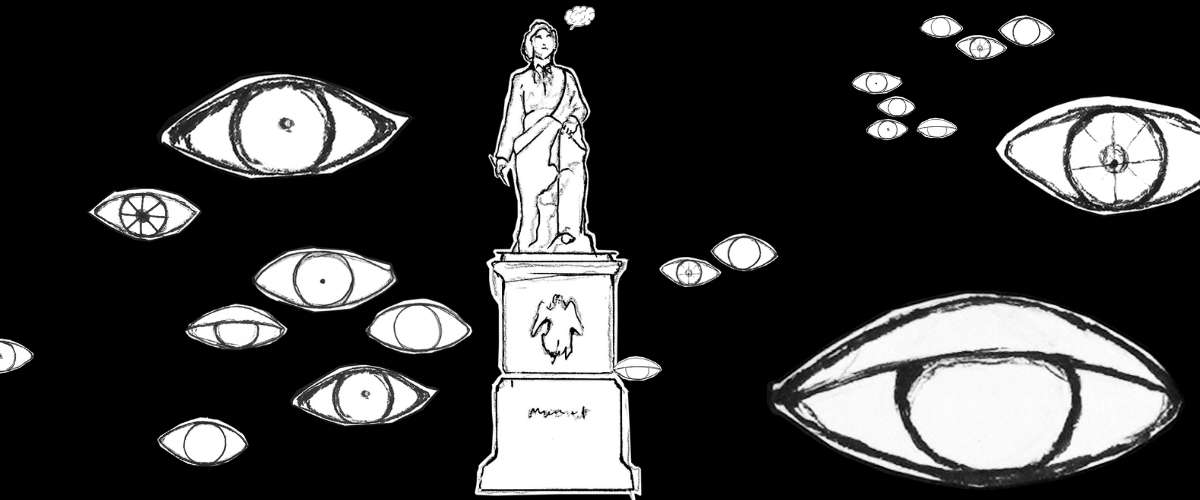“The way we organize the arts in the West needs to be rebuilt from the ground up”
Hassan Mahamdallie in conversation with Anita Moser and Ielizaveta Oliinyk
The most marginalized are the ones who are the most creative. Therefore, surely they should be given more value than we do. At the moment, we give all the value to the centre, where the accumulation of power and taste-making is. More money should flow to the margins in terms of art subsidies. The people who should be heading arts organizations should be those who come from the margins, because they have more and better ideas that are less restricted by the status quo, and they are not so interested in power for its own sake. They also represent the majority.
I think the Creative Case for Diversity is a radical proposal for the arts – a way of trying to talk about the arts, about diversity and equality everywhere in the arts, in an artistic language. I didn’t write it as a strategy, I originally wrote it as conversation. I think in the UK we’re starting to make some of the ground-breaking leaps that you need to make things really change. We’ve definitely won the argument. There’re very few in the arts in the UK who publicly bring up a negative reaction or argument against the Creative Case in principle, or who would openly oppose change.
What has happened in the UK is that, in the last decade since the Creative Case launched, there has been a gradual shift in the leadership of the arts. The Creative Case has become an official strategy of the Arts Council of England, the main funding body. In the UK, where people of colour have been appointed to lead quite large arts institutions, companies and arts galleries, they’ve done extraordinarily well; transforming those spaces and places and attracting new audiences.
But still, in the main the institutions are run primarily by old white men, I think they should be run by twenty- or thirty-year-olds. The younger generation coming up could quite easily run the arts much, much better, more imaginatively and in more extraordinary and unexpected ways than most of the people who are now sitting at the top.
We haven’t really had a shift of power. Power has proven to be an illusive beast to be pinned down. No one seems to want to give up power, which needs to happen. Some of the leaders, some of these institutions are on very, very big money, which I find obscene. Wage disparity in the arts is immense between the top and the bottom, much larger than in the rest of society. So with the Creative Case, we may have won the argument, but we haven’t won the shift of power which the argument demands.
What would it take to change these power structures? Maybe they need to be discussed at a different level? Or are there strategies other than the Creative Case that are needed to change them?
Yes. I came to the arts in the midst of 1980s as an actor, and many people around me were older than me and part of the ’68 generation. That revolutionary period from the late 1960s to early 1970s – with the revolutions of 1968 in France, the anti-Vietnam War movement, the feminist and LGBT movements, the Stonewall riots, also the democratic spring in eastern Europe in 1956, Hungary and so on – shaped the whole generation. They were basically an insurgent generation; they occupied the arts and went on to change it. They set up their own galleries. Companies which are now part of the establishment started out by being founded by radicals and revolutionaries in the 1960s and early 1970s. So that generation was shaped by radical politics, and their politics then radically shaped the arts.
The Creative Case as an intellectual idea can’t change power structures on its own. It has, like earlier periods, to be linked to a social movement. I think young people today are more egalitarian, much more multicultural, less interested in status, more interested in doing good. I’m being idealistic, but you understand what I mean? I think at the end of the day, like 1968, art will be changed by what happens outside of the arts in society in general. That revolutionary wave in 1968 threw up so much innovation in art which now we take for granted, works now sit in museum and gallery collections, but that’s not where they started life.
Hassan Mahamdallie, Anita Moser, Ielizaveta Oliinyk ( 2022): “The way we organize the arts in the West needs to be rebuilt from the ground up” . Hassan Mahamdallie in conversation with Anita Moser and Ielizaveta Oliinyk. In: p/art/icipate – Kultur aktiv gestalten # 13 , https://www.p-art-icipate.net/the-way-we-organize-the-arts/


 Artikel drucken
Artikel drucken Literaturverzeichnis
Literaturverzeichnis